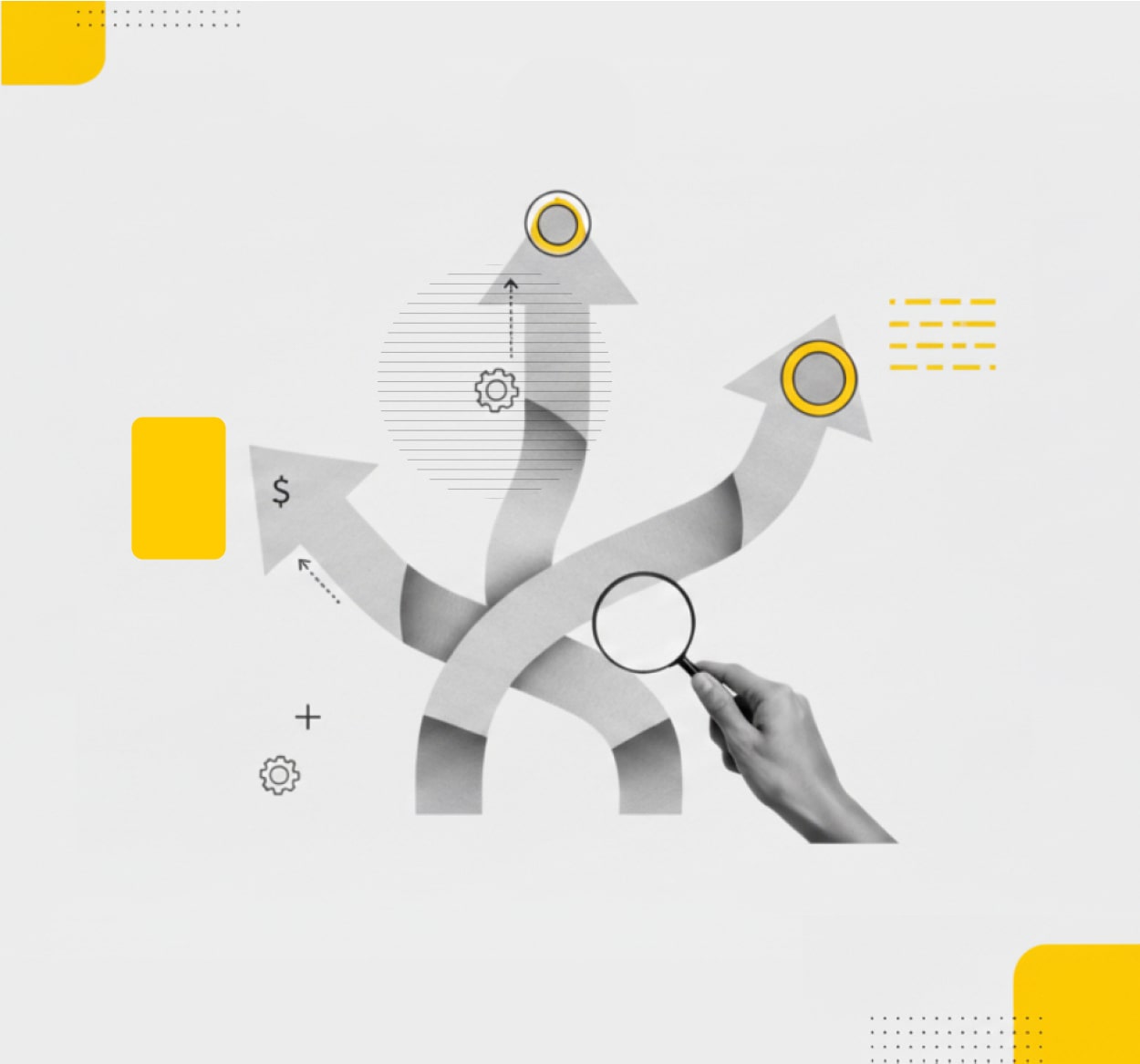Are you tired of struggling to generate leads and close deals through traditional methods?
Do you want to grow your business to new heights and learn the secrets of effective cold calling?
To succeed in today's world, where competition is tough and attention spans are shorter, it's essential to empower yourself with data-backed techniques that actually work.
This article will reveal the cold-calling statistics that can turn your company into a relentless closing machine.
Get ready to crush your sales goals!
How Cold Calling Statistics Will Help You
In spite of the fact that cold calling may seem stressful, some statistics show it can be highly effective for salespeople.
Salespeople can raise their success rate by using great follow-up strategies like personalization and persistence.
- Studies show that 80% of sales require 5-12 follow-up calls.
- 70% of salespeople say email follow-up is the most effective way to connect with prospects.

Effective follow-up is essential for any salesperson, and cold calling can be powerful.
- According to HubSpot, sales representatives who make six or more attempts to contact a prospect have a 70% higher chance of success than those who make only one or two attempts.
- According to the study by the Brevet Group, 80% of sales require more than five follow-up calls.
To ensure success, sales reps should have a well-planned follow-up strategy.
- According to Invesp, personalized emails have a 29% higher open rate and a 41% higher click-through rate than generic ones.

As supported by numerous statistics, B2B cold calling can effectively generate leads and close deals. In fact, a study by Baylor University found that salespeople who make cold calls are 2.5 times more likely to reach their sales quotas than those who don't.
Cold calling can also lead to quicker sales cycles, with a study by RAIN Group revealing that 82% of B2B decision-makers accept meetings on the spot.
It allows salespeople to gather valuable information about prospects and tailor their pitches accordingly. Cold calling can also be a valuable tool for salespeople to generate leads, close deals, and gather prospect information.
General Cold Calling Statistics
- Only 1% of cold calls eventually result in a meeting. (Source)
- More than 60% of buyers are willing to talk to salespeople who reach out to them with relevant content and information.
- According to the survey, 42.1% of respondents believe that the phone is the most efficient sales tool they have available.
- According to RAIN Group, nearly 7 out of 10 buyers stated that they received and accepted at least one cold call in 2019.
- Salespeople who follow up within five minutes of the first contact are nine times more likely to convert the lead. (Source)
- Over 30% of leads are left without a follow-up call after the initial contact.
- Leads receiving a follow-up phone call within an hour of submitting an inquiry have a 450% higher response rate than those who do not receive a follow-up call.

- More than half of all top-performing companies globally use cold calling as a primary channel for generating leads.
These stats highlight the importance of personalization, prompt follow-up, and persistence in cold calling.
While cold calling may seem challenging, it can still be an effective tool for generating leads and driving sales if done strategically and with the right techniques.
Cold Calling Statistics To Boost Conversion Rate
- 80% of buyers prefer to be contacted via phone.
- 63% of buyers who request information on your company will not purchase for at least three months. (Source)
These statistics highlight the importance of persistence and following up with potential buyers after the initial cold call.
It also shows that while email and other forms of communication are important, the phone is still the preferred method of contact for many buyers.
- 79% of buyers say they prefer to talk to salespeople who understand their business and can ask relevant questions. (Source)
- 67% of buyers say they will give a salesperson a meeting if they are introduced through a referral.

- 64% of buyers say that making their buying experience more personalized is a top priority for vendors.
- 57% of buyers say they want to speak with a salesperson early in the buying process. (Source)
- 50% of buyers say they are open to a cold call if the seller provides insight and value.
These statistics highlight the importance of personalization, relevance, and value in cold calling.
Engaging buyers with salespeople has more potential if they clearly understand their business needs and offer valuable insights or solutions.
Additionally, referrals and introductions can be an effective way to build trust and credibility with potential buyers.
Cold Calling Statistics About Outreach Time And Cadence
The time for your cold-calling outreach can significantly impact your success rates.
- The best cold calling time ranges from 4-5 pm, 71% more effective than 11 am to 12 pm.

This suggests that sales representatives can better connect with potential clients and make successful sales during this hour.
- Wednesday is the best day to contact a prospect, with Thursday coming in at a close second.
- According to CallHippo's research, the success rate of cold calls is 46% higher on Wednesdays than on Mondays.

This indicates that the day of the week can significantly affect the effectiveness of cold-calling strategies, with Wednesdays potentially being a more favorable day for such outreach efforts.
- If you make six attempts to reach a prospect, you have a 90% chance of making contact.
Gong's data suggests that a successful cold call lasts 5 minutes and 50 seconds, about 2 minutes longer than an unsuccessful call that lasts only 3 minutes and 14 seconds.
During the successful calls, the sales pitch lasts for 37 seconds without interruption, which is around 50% longer than the average pitch duration.

Gong's data suggests that a successful cold call lasts 5 minutes and 50 seconds, which is about 2 minutes longer than an unsuccessful call that lasts only 3 minutes and 14 seconds.
During successful calls, the sales pitch lasts for 37 seconds without interruption, which is around 50% longer than the average pitch duration.
B2B Cold Calling Statistics
Despite the emergence of various modern communication tools, salespeople still consider calls to be an effective way to start engaging with potential business clients.
Persistence pays off, as 80% of sales need at least five follow-up calls after the first meeting.
- According to Salesforce, the average sales rep makes 52 calls daily.
- It may take almost 18 calls to connect with a buyer. (Source)
- 78% of business decision-makers have taken an appointment or attended an event initially solicited via cold email or phone call. (Source)
- 90% of top-performing salespeople use social selling tools, like LinkedIn, to research prospects before reaching out. (Source)
- According to OptinMonster, most sales representatives, specifically 78.1%, incorporate social media channels into their sales process for research purposes.
This indicates that social media platforms have become an integral tool for sales professionals to gather information about their potential clients and tailor their sales pitches accordingly.
According to Forbes, sales representatives who use social media for prospecting purposes experience higher sales performance than those who do not.
Specifically, 78.6% of sales representatives who leverage social media for prospecting report better sales outcomes than the average for agents who do not use social media.
This suggests that incorporating social media into the sales process can improve sales performance for sales representatives.
- On the other hand, as per RAIN Group's research, most potential clients, specifically 82%, review companies on LinkedIn before engaging in calls with sales representatives.
A strong LinkedIn presence can positively impact the success of sales outreach efforts and influence prospects' decisions to engage with sales representatives.
It may be necessary to reevaluate and modify cold-calling marketing strategies to better align with prospects' preferences and needs.
- According to the RAIN Group, the elements that impact a buyer's final purchasing choices are the value you can provide to them (96%), your capacity to collaborate with them (93%), and how you can educate them with fresh concepts (92%). Consumers also decide based on the valuable insights you can offer regarding their industry (92%).

- According to HubSpot's research, a significant majority of buyers, specifically 84%, express dissatisfaction with the persistent and bothersome attempts made by sales representatives to persuade them to make a purchase.
This suggests that sales tactics prioritizing pressure and persuasion may not effectively engage with potential clients.
Cold Calling C-Level Executives Statistics
Being a cold-calling C-level executive can be challenging, but the rewards can be significant.
Here are some statistics to consider:
- Only 18% of B2B buyers trust salespeople, but this percentage increases to 27% for C-level executives.
- 63% of C-level executives prefer to receive a phone call as the first point of contact. (Source)
These statistics show that C-level executives are more likely to trust salespeople than other B2B buyers and are willing to attend events to grow their businesses.

- 90% of C-level executives say they never respond to cold calls or emails. (Source)
- On the other hand, 64% of senior executives have purchased from a cold call. (Source)
Other Interesting Cold Calling Statistics
- Cold emailing has a higher response rate (15%) than cold calling (2%).
- Only 28% of cold calls actually result in conversations. (Source)
- Nearly 90% of decision-makers will not respond to cold outreach.
- A study found that 80% of sales require five follow-up calls after the initial meeting, yet 44% of salespeople give up after just one follow-up. (Source)
- Sales reps using social selling are two times more likely to meet or exceed their sales share than those without. (Source)
- Cold calls and emails with specific recipients have a 41% and a 29% greater click-through rate than generic ones. (Source)
- Nearly half of sales reps cite a lack of information about a prospect as the biggest obstacle to closing a deal. (Source)
This indicates that leaving voicemail messages is a common practice in sales outreach and can be a significant aspect of a salesperson's daily routine.
- According to Gong, successful cold calls contain 65% more "we" statements. Starting a cold call with "How've you been?" increases the likelihood of booking a meeting, while asking "Is now a bad time?" reduces the chances by 40%.

Revolutionize Your Sales with AI bees
The top cold-calling statistics presented in this article provide valuable insights for businesses looking to improve their sales performance through effective cold-calling strategies.
By understanding the best times to call and the impact of follow-up calls, businesses can better target their efforts and increase their success rates.
These statistics also highlight the importance of personalized and engaging conversations with prospects.
By implementing these findings into your cold-calling strategies, your business can improve its sales performance and achieve its growth objectives.
Considering the latest statistics and trends, your sales team can increase their success rate and grow your business.
You can also take your sales process to the next level with the help of AI-powered technology. This is where AI bees come into play.
We help companies unlock the power of top cold-calling statistics for unbeatable results!
Schedule a demo with us today to learn more.
Make Loss Impossible
with Performance-Based Marketing

Personalized Campaigns with
Precisely Selected Prospects
.svg)
Analysis From Your Dedicated
Account Manager

with a Team of Growth Hackers
we Develop your Tailor-Made Strategy

.svg)






.webp)




%201.svg)
.svg)





.webp)